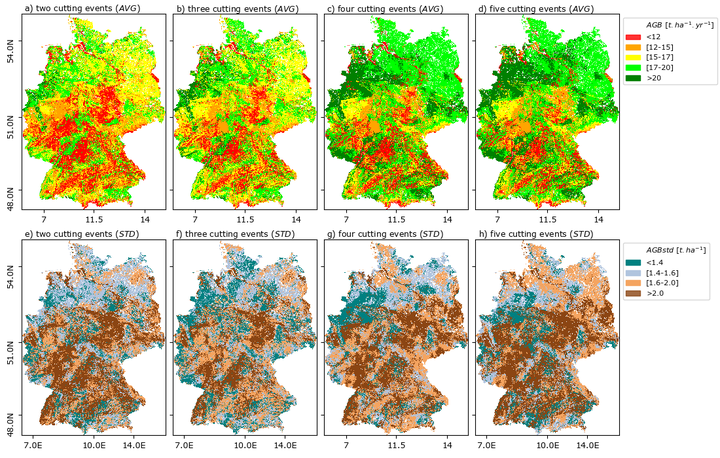[22] Improving the simulation of permanent grasslands across Germany by using multi-objective uncertainty-based calibration of plant-water dynamics

Abstract
The dynamics of grassland ecosystems are highly complex due to multifaceted interactions among their soil, water, and vegetation components. Precise simulations of grassland productivity therefore rely on accurately estimating a variety of parameters that characterize different processes of these systems. This study applied three calibration schemes – a Single-Objective (SO-SUFI2), a Multi-Objective Pareto (MO-Pareto), and, a novel Uncertainty-Based Multi-Objective (MO-SUFI2)– to estimate the parameters of MONICA (Model for Nitrogen and Carbon Simulation) agro-ecosystem model in grassland ecosystems across Germany. The MO-Pareto model is based on a traditional Pareto optimality concept, while the MO-SUFI2 optimizes multiple target variables considering their level of prediction uncertainty. We used measurements of leaf area index, aboveground biomass, and soil moisture from experimental data at five sites with different intensities of cutting regimes (from two to five cutting events per season) to evaluate model performance. Both MO-Pareto and MO-SUFI2 outperformed SO-SUFI2 during calibration and validation. The comparison of the two MO approaches shows that they do not necessarily conflict with each other, but MO-SUFI2 provides complementary information for better estimations of model parameter uncertainty. We used the obtained parameter ranges to simulate grassland productivity across Germany under different cutting regimes and quantified the uncertainty associated with estimated productivity across regions. The results showed higher uncertainty in intensively managed grasslands compared to extensively managed grasslands, partially due to a lack of high-resolution input information concerning cutting dates. Furthermore, the additional information on the quantified uncertainty provided by our proposed MO-SUFI2 method adds deeper insights on confidence levels of estimated productivity. Benefiting from additional management data collected at high resolution and ground measurements on the composition of grassland species mixtures appear to be promising solutions to reduce uncertainty and increase model reliability.